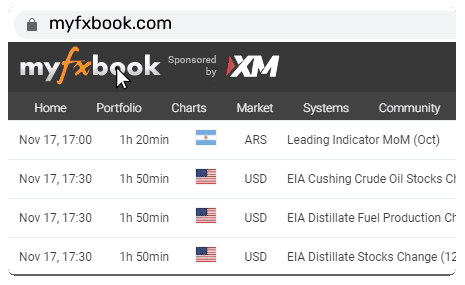The US Dollar A Comprehensive Analysis of Recent Trends and Future Outlook

The US dollar (USD) experienced a 1.0% decline on the DXY index in September, representing a relatively moderate drop compared to the 2.3% decrease seen in August. This stabilization in the dollar's value came because of investors having already adjusted their expectations in anticipation of the Federal Reserve’s (Fed) latest policy moves. Leading up to its recent meeting, the market had largely priced in a scenario involving a more aggressive monetary easing, thereby muting the impact of any immediate changes. The smaller-than-expected drop in September indicates that the Fed's cautious tone—signalling two 25-basis point cuts in November and December—was enough to moderate investor expectations.
Looking further ahead, the Fed’s long-term projections suggest a path that would see a cumulative 100 basis points (bps) of rate cuts in 2025, followed by an additional 50 bps of easing in 2026. Such a trajectory would align the federal funds rate closer to its long-term neutral average of 2.88%. However, this outlook hinges on several assumptions, most notably the Fed’s optimistic forecasts for economic growth. Specifically, the central bank projects sustained real GDP growth of 2.0% annually through 2027, alongside only a slight uptick in unemployment. This combination appears overly idealistic, raising doubts about the Fed’s ability to navigate such a complex economic environment.
Monetary Policy Outlook: Is a Larger Rate Cut on the Horizon?
The current rate cut forecast is subject to significant uncertainty, particularly as the Fed’s guidance remains data dependent. A single weak jobs report could upend existing expectations, prompting the market to price in more substantial cuts—potentially 50 bps each in both November and December. Such a scenario would reflect a shift toward a more aggressive easing stance, designed to counteract signs of economic softness. This move could keep the USD at its present lower levels without triggering a broader sell-off, especially given the similar outlook for other major central banks.
Bank of England (BoE), Reserve Bank of Australia (RBA), and the European Central Bank (ECB) are also increasingly likely to adopt more dovish stances, reflecting the synchronized slowdown in global growth. Should these central banks follow suit with rate reductions, the relative stability of the USD might persist, as the focus shifts from US policy alone to a broader international context of monetary easing.
How the 2024 Election Could Reshape the Economic Landscape
The political environment adds another layer of complexity to the USD outlook. Our baseline forecast currently assumes a narrow victory for Kamala Harris in the upcoming presidential election. However, the probability remains extremely close, with both Harris and former President Donald Trump standing at nearly equal odds. Should Trump secure a second term, the economic landscape could shift dramatically. His administration could prioritize business-friendly policies, including significant corporate tax cuts and regulatory rollbacks aimed at boosting private sector confidence.
Such measures would likely drive a surge in business investment and sentiment, potentially leading to a higher federal funds rate by the end of 2025. Additionally, Trump’s penchant for protectionist trade policies, including the imposition of tariffs, could further complicate the outlook. While the exact scope and scale of such tariffs are hard to predict, even a moderate implementation would have a tangible impact on trade flows, inflation, and ultimately, the USD’s value.
Under a Trump administration, we project that the federal funds rate could end up 100 bps higher compared to a Harris-led scenario. This divergence in monetary policy would manifest in a notably stronger USD, potentially driving the EUR/USD rate 7% lower by the third quarter of 2025. Correspondingly, the DXY index would likely be 7-8% stronger under a Trump presidency. In contrast, a Harris victory would maintain the Fed’s current dovish trajectory, resulting in a softer dollar and a more muted reaction from global markets.
Key Economic Indicators: Labor Market and Growth Projections
The Fed’s recent decision to kick off its easing cycle with a 50-bps cut, as opposed to the traditional 25 bps increment, marked a significant departure from its usual strategy. This move reflects heightened concern about the state of the labour market and broader economic conditions. With ongoing weakness in key employment indicators, the Fed appears more proactive in countering a potential slowdown. However, the timing of this decision suggests that the central bank may have delayed acknowledging the full extent of the labour market’s deterioration.
Upcoming labour reports will play a pivotal role in shaping the Fed’s policy trajectory. If employment data shows continued softness, the market could anticipate even deeper cuts, possibly pushing the Fed toward an even more accommodative stance. This would reinforce the USD’s downward pressure but could also provide a cushion against extreme volatility if other major central banks move in tandem.
The current outlook for the US dollar and monetary policy is intertwined with both economic fundamentals and political developments. With the Fed signalling a cautious path of rate cuts through 2025 and 2026, the focus now shifts to whether the central bank can achieve its optimistic growth projections. Political factors, particularly the outcome of the 2024 presidential election, could further complicate the picture. A Trump victory could lead to a more hawkish policy stance, supporting a stronger USD, while a Harris administration would likely align more closely with the current easing trend.
Federal Reserve Policy Outlook: The Fed’s guidance points to two rate cuts in 2023, with additional reductions expected in 2025 and 2026. This gradual easing trajectory suggests a long-term return to a neutral rate around 2.88%.Economic Forecasts: The Fed’s projections of 2.0% annual GDP growth through 2027 and minimal unemployment increases appear overly optimistic, raising concerns about the accuracy and feasibility of its long-term outlook.Impact of Political Scenarios: The strength of the USD could vary significantly based on the 2024 presidential election outcome. A Trump win would likely strengthen the dollar, driven by potential tax cuts and higher rates, while a Harris victory would support a more dovish monetary stance.Labor Market Concerns: The Fed’s recent larger-than-expected rate cut indicates deeper concerns about labour market health, with upcoming employment data being critical for shaping future rate decisions.Global Monetary Policy Dynamics: With major central banks also leaning towards rate cuts, the USD’s relative position could remain stable, even amid further domestic easing.This content may have been written by a third party. ACY makes no representation or warranty and assumes no liability as to the accuracy or completeness of the information provided, nor any loss arising from any investment based on a recommendation, forecast or other information supplies by any third-party. This content is information only, and does not constitute financial, investment or other advice on which you can rely.



















